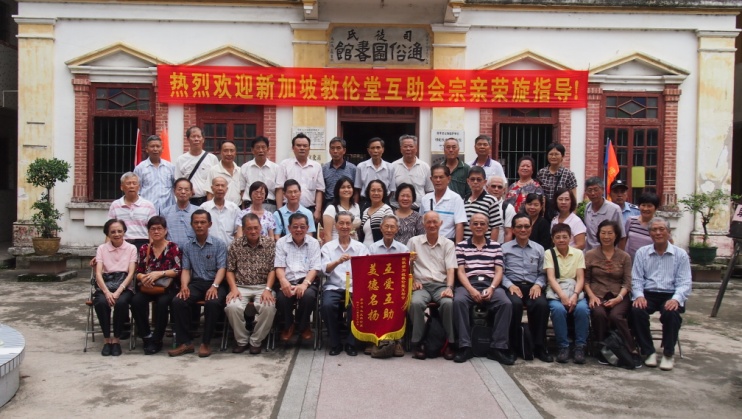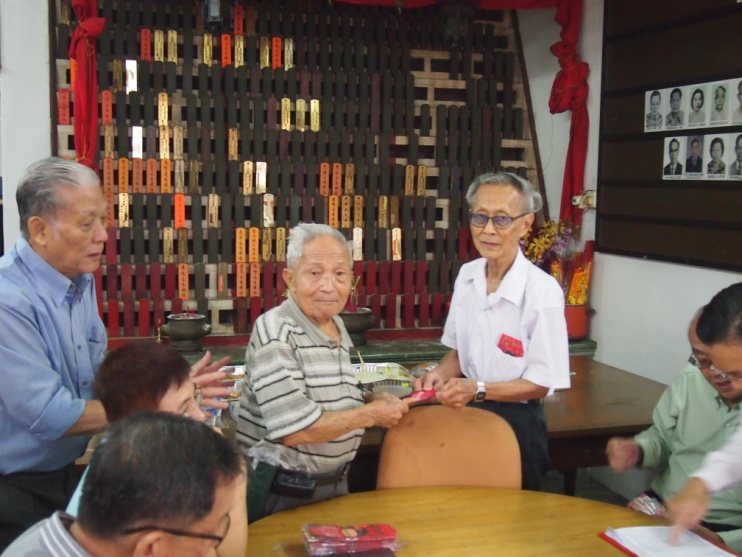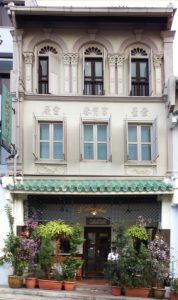
The mid 19th century saw the establishment of Singapore as a bustling entreport. It also saw an ever increasing influx of immigrants from the southern two provinces of China – an influx of people who, together with local Malay and Indian immigrants, gave Singapore much of its working dynamism. While Singapore witnessed its own transition from a quiet fishing village to what was to be described as “the most important station in the East … of much higher value than whole continents”, the immigrant Chinese population saw the establishment of clan consciousness which were to look after the needs of the Singapore Chinese population in the years to come. It was during this time of flux that the seeds of Singapore Szeto Clan Association was planted – originally called Szeto Family School (司徒家塾), it was set up by Situ Zhong, an immigrant from Kai Ping County.

Situ Zhong recognised and anticipated the problems which would be faced by an increasing population of Singapore Szetos. With this in mind, he rallied the help of several like minded friends, and together they established the Szeto Clan Association (司徒家塾) along Chin Lai Street in the early 1860s. At that time, the association busied itself in helping new Szeto immigrants find jobs, as well as in handling matters of family bereavement.
The world economic depression of early 1930s triggered the collapse of many local business establishments – the Szeto Clan was not freed from the suffering. With the closure of several Tanjong Pagar Dockyards, many Szetos were found jobless.
The sudden overwhelming crises brought the association’s activities to a temporary standstill. In 1936, the association was “resurrected”. A rallying call at that time gathered a membership of over a hundred local Szetos.
In 1936, a legislation was passed by the colonial government where all clan association had to be registered with the local authorities. However, in view of its long history, the Szeto Clan Association was quickly accepted as a recognised establishment without having to go through the intricacies of bureaucracy. The association was also able to expand its own activities in 1940 saw the operation of a private school within its compound at Chun Lai Street for a nominal rental fee.
With the Japanese invasion of 1942, the Chin Lai Street premises was taken over by the occupation forces and converted to a workers’ quarters. Part of the association’s properties which could be salvaged by clan members were housed in the Zhao Qing Association.
The end of World War II in 1945 heralded a period of transition in the history of Singapore, as well as in the history of the Szeto Association. It was re-established and the association was renamed Szeto Kau Luen Tong.
A membership fee of $1.00 together with a monthly subscription fee of $0.50c was instituted to help finance the activities of the association. The Szeto Kau Luen Tong re-acquired the Chin Lai Street premises which had, by then, been much battered by the Japanese occupants. In view of the dilapidated state of the association’s quarters, a proposal to purchase a 3-storey building along Club Street (No. 85) was mooted in 1940. This purchase required $25,000.00, viz. $24,000.00 in excess of what was available in the association’s coffers. Fortunately, the association was able to raise $23,000.00 in the form of interest-free loans issued by generous clan members with the remaining deficit was made up for by a variety of fund-raising measures which were suggested by association members. A total of $4,000.00 was raised through the sale of lots, within the association’s quarters, for the establishment of ancestral tablets.
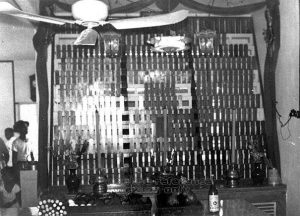
Unfortunately, plans to move the association headquarters into the Club Street premises were set back by a colonial legislation, the Rent Control Act which forbade the eviction of a building’s tenants and freezing of rental fees.
The Establishment of the Mutual Help Association
Through 1948, the association experienced increasing difficulty in supporting/financing its own activities. A proposal was then raised to set up an affiliated Mutual Help Association (宗親互助會) to help finance the needs of the association. A new constitution was laid down with the passing of the proposal. The new constitution stipulated the membership was open to all families with the surname Szeto or Xue. Monthly subscription of $3.10 per member allowed the withdrawal of $1,000.00 after 20 years, by the same member. Allowance were also made for families of deceased members to reclaim funds proportionate to the duration of membership. The new arrangement received widespread support, thus allowing the association’s treasury funds to increase by several fold within the same year. Concurrently, the deed of the Club Street property was transferred to the assets of the Mutual Help Association. With the transference of the deed, the responsibility for repaying the loans taken up at the purchase of the property was handed over to the Mutual Help Association. Subsequently, half of the association’s expenditure were upheld by the treasury of the Mutual Help Association, a measure of balance was thus achieved in the association’s finance.
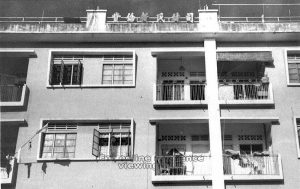
The association’s annual general meeting in 1958 passed a proposal to purchase a new property at Horne Road. Funding for this proposal was to come from the proceeds obtained through the sale of the Chin Lai Street premises ($12,000.00) as well as from a $10,000.00 loan issued byMutual Help Association. The new property at Horne Road was to be used as the new headquarters for the Szeto Clan Kau Luen Tong. Part of the new premises was also rented out as a means of obtaining revenue for the association.
In 1964, a bursary fund was established with generous contribution by Szetos both locally and abroad to assist needy members in financing their children’s education. This fund still continues today.
In 1988, the Association was presented with the opportunity to recover 85 Club Street with the Government repealing the Rent Control Act . Office bearers and members studied the options, legal matters, finance and feasibility of selling or conserving 85 Club Street. Eventually it was concluded that conserving 85 Club Street was deemed worthwhile for sentimental and historical value to the Clan and a source of potential income to the clan.
The Conservation Committee then prepared and sent out requests to all members to pledge their personal (interest-free) loan of whatever they could afford to fund the conservation project. After much effort, the conservation project was completed in late-1994. The building was leased out and the income generated enabled all the loans pledged by each respective loan members returned to them after a period of ten years. Currently the 85 Club Street rental income has contributed much to a comfortable sinking fund growth for the Association.
In recent years, in addition to local activities like social gatherings, education bursary awards, and archival record keeping, the Clan was also able to donate to the Szeto Library and school in Kaiping, and subsidized member group trips to Kaiping for those who are interested in exploring their roots.
Throughout the 140 years of its existence, the Singapore Szeto Clan Association has striven to better the lot of the lives that it could give, and in a small way contributing to the growth and advancement of this nation.

